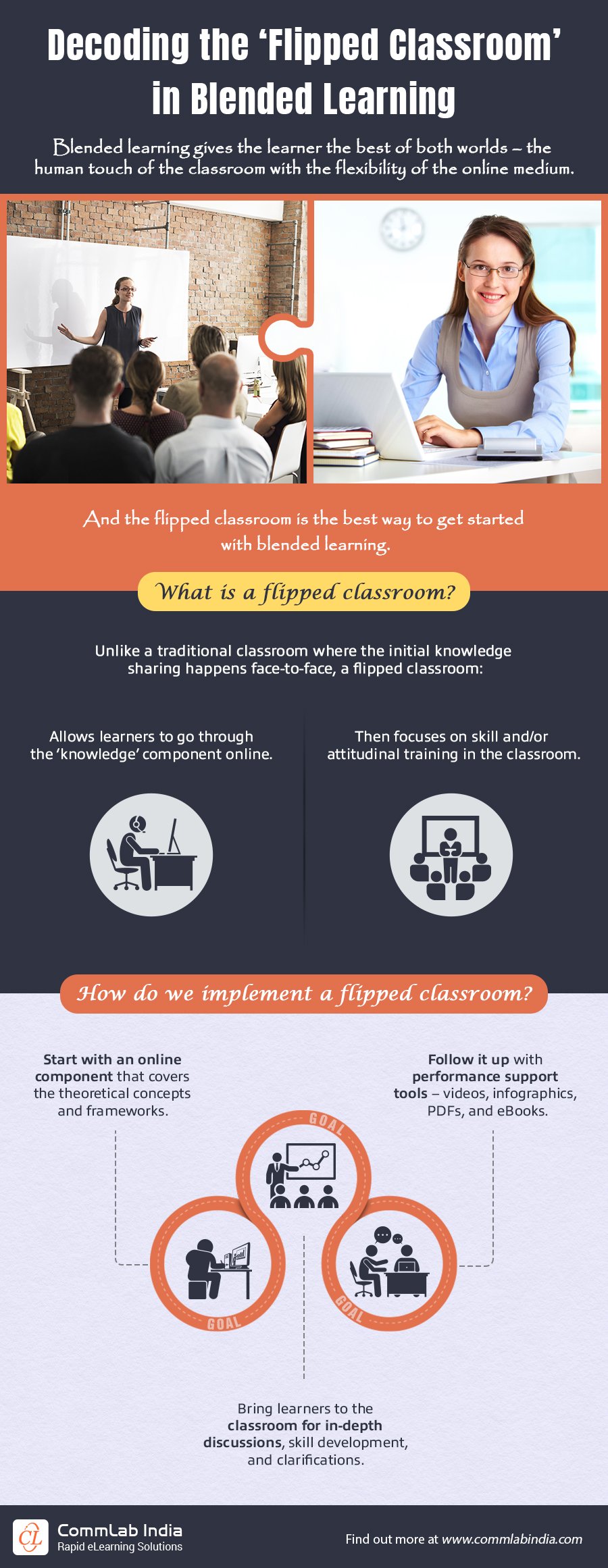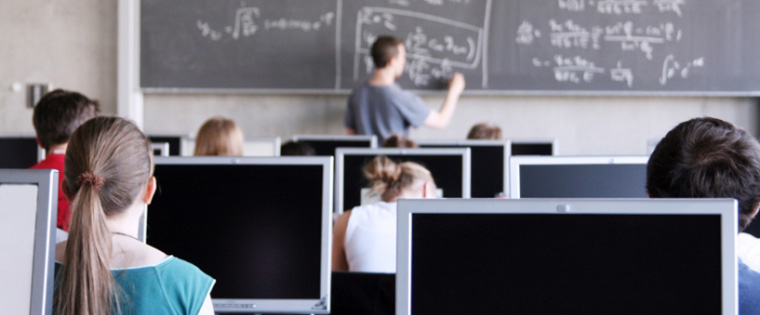Decoding the ‘Flipped Classroom’ in Blended Learning [Infographic]
![Decoding the ‘Flipped Classroom’ in Blended Learning [Infographic] Decoding the ‘Flipped Classroom’ in Blended Learning [Infographic]](https://blog.commlabindia.com/hubfs/Imported_Blog_Media/blended-learning-flipped-classroom-decoded-infographic.png)
Blended learning as a training strategy is widely popular as it combines the flexibility of online training with the structured format followed in formal classroom training to deliver a cohesive learning experience.
Although there are different combinations of blended learning models that are followed, they are mostly based on these 4 main models: Rotation, Flex, À La Carte, and Enriched Virtual. The flipped classroom is a sub-category in the Rotation blended learning model. As the name suggests, the flipped classroom is the reverse of traditional classroom training.
In a flipped classroom, learners go through online training in the form of eLearning or microlearning before they come to a brick-and-mortar or virtual classroom. The classroom is used to deliver in-depth learning, get learners to apply learning, or participate in collaborative learning activities.
What is a flipped classroom and how can you implement one? This infographic shares the details.
The flipped classroom in blended learning has changed the way we deliver corporate training. It has made training programs more interactive and increased interaction between the learners and instructors. Because learners get time to go through content even before they attend classroom training, it helps them work toward content mastery.
Have you included the ‘flipped classroom’ in your blended learning strategy, yet? For more tips and tricks on boosting employee performance, download our eBook on blended learning.








